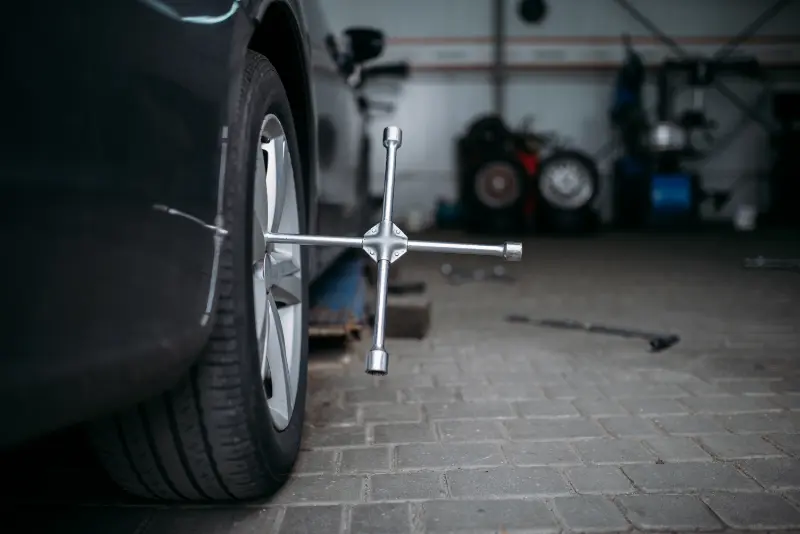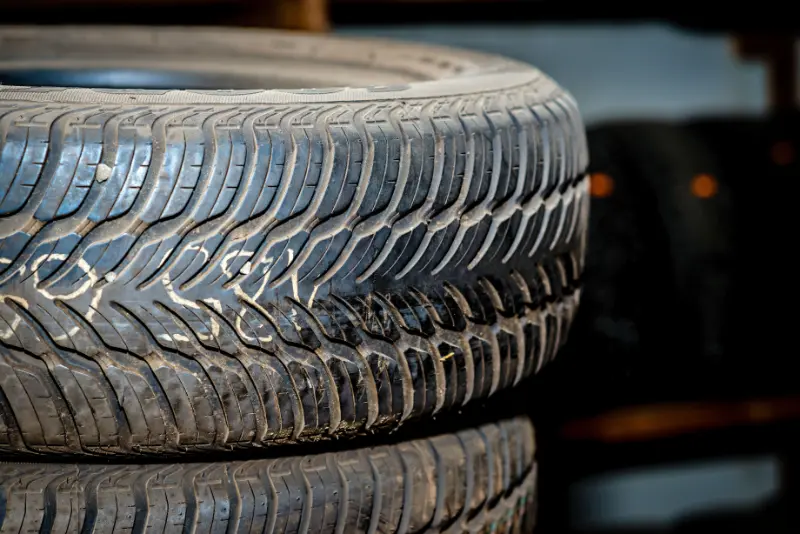Finding the right tyres for your vehicle is crucial for safety, performance, and fuel efficiency. The process begins with understanding how to find your tyre size and read tyre markings. This comprehensive guide will explain how to use your vehicle’s registration number to determine tyre size, decode the numbers and letters on your tyre sidewall, and why ensuring the correct tyre size before purchasing new tyres is essential. Additionally, you’ll learn how to manually measure your existing tyre size, along with answers to frequently asked questions about tyre sizes.

How to Find Your tyre Size Using Your Vehicle’s Registration Number
Using Online Tools to Check Your tyre Size by Registration
Many drivers need to be made aware that you can find the right tyre for your car simply by entering your registration number on various online tools. These platforms access a vast database linking vehicle registrations to the tyre size your vehicle was initially equipped with. This eliminates the guesswork and ensures that you check your tyre size accurately and swiftly. It’s an efficient method to search by reg for the tyres you need without the hassle of manually inspecting your tyre sidewall.
The Role of Vehicle Registration in Identifying Tyre Size
Your vehicle registration number (reg) plays a pivotal role in identifying the correct tyre size for your car. Vehicle records contain detailed specifications about each model, including factory-fitted tyre size. By using a registration lookup feature, you leverage this information to ensure that you find the tyre size that matches your vehicle’s manufacturer recommendations. This service simplifies the process of sourcing the right tyres for your car by aligning with the prescribed standards.
Alternatives to Registration Lookup for Finding Tyre Size
If you’re unable to use a registration lookup service or prefer a hands-on approach, several alternatives can help you find your tyre size. Notably, your vehicle’s handbook typically includes a section dedicated to tyre specifications such as tyre width, diameter, and type, providing a reliable reference point. Inspecting the sidewall of your tyre directly also reveals this information, albeit it requires some knowledge to interpret the codes. These methods ensure you can still locate the right tyres for your car, regardless of the circumstances.
Understanding the Basics of Reading Your Tyre Size
Decoding the Numbers and Letters on Your Tyre Sidewall
The numbers and letters etched on the sidewall of your tyre contain vital information about tyre width, aspect ratio (or the height of the tyre sidewall as a percentage of the tyre width), diameter, speed rating, and load index. For instance, a marking might read “215/65R15 96H”, where “215” refers to the tyre width in millimetres, “65” is the aspect ratio, “R” indicates radial construction, “15” signifies the rim size in inches, “96” is the load index, and “H” represents the speed rating. Mastering this code allows drivers to identify the size tyres and specifications their vehicle needs precisely.
The Significance of Tyre Width, Height, and Diameter in Sizing
Understanding the significance of tyre width, height, and diameter is crucial when selecting new tyres. The tyre width affects traction and handling, while the height of the tyre sidewall influences ride comfort, and the diameter dictates which rim sizes are compatible. Each dimension plays a role in how the tyre will perform and how it fits your vehicle. Proper sizing ensures that the tyres provide the necessary support, handling, and safety features designed for your car.
What the Speed Rating and Load Index Mean for Your tyres
The speed rating and load index are critical factors to consider when reading tyre markings. The speed rating indicates the maximum speed your tyre can handle consistently, while the load index specifies the maximum weight each tyre can support. Ensuring that your new tyres meet or exceed your vehicle’s recommended ratings is vital for maintaining optimal performance and safety standards. It’s not just about finding tyres that fit; it’s about finding tyres that can handle the demands of your driving habits and load requirements.

Why Checking Your Tyre Size is Essential Before Purchasing New Tyres
The Impact of Different Size tyres on Vehicle Performance
Fitting the wrong size tyres to your vehicle can adversely affect its performance, handling, and safety. For instance, tyres that are too large may rub against the vehicle’s body or suspension components. At the same time, those that are too small could alter the accuracy of speedometer readings and reduce vehicle stability. Therefore, checking tyre size against manufacturer recommendations before purchasing new tyres is crucial to maintain the integrity of your vehicle’s performance.
How to Check Tyre Size Against Manufacturer Recommendations
Checking tyre size against manufacturer recommendations involves consulting your vehicle’s handbook or using a registration lookup service to access the original specifications. This ensures that the new tyres fit your car perfectly without compromising safety or performance. Tyre manufacturers and dealers also offer comprehensive guides and tools to help drivers choose compatible tyres based on detailed vehicle specifications.
The Risks of Fitting the Wrong Size Tyres to Your Car
Fitting the wrong size tyres presents numerous risks, including reduced handling and braking performance, increased wear and tear on vehicle components, and potentially voiding your car’s warranty. It underscores the importance of ensuring that you change the size of your tyres only in accordance with approved guidelines and maintain the correct tyre pressure for optimal performance and safety.
How to Measure Your Existing Tyre Size Manually
Tools and Techniques for Measuring Tyre Size at Home
If you’re inclined to measure your tyre size manually, a few simple tools—a tape measure, a notepad, and possibly a magnifying glass to read worn markings—are all you need. Carefully measuring the width, height, and diameter of your tyre and comparing these measurements with your vehicle’s specifications offers a hands-on approach to finding the correct tyres. While this method requires more effort, it can be beneficial when tyre markings are worn or missing.
Determining Tyre Size When Information is Worn or Missing
In cases where tyre markings are worn or missing, there are other options than measuring the tyre directly. Consulting your vehicle’s handbook provides OEM specifications for tyres, ensuring you can still find the right fit. Alternatively, professionals at tyre service centres are equipped to assess your vehicle and recommend tyres that meet or exceed the original specifications, ensuring safety and performance are not compromised.
Understanding Tyre Tread Depth and When to Replace Tyres
Understanding tyre tread depth is crucial for safety and performance. Most new tyres have tread depths between 10/32″ to 11/32″; when this depth reduces to 2/32″, it’s legal time to replace your tyres. Regularly checking your tyre tread depth can prevent accidents caused by poor traction, especially in adverse weather conditions, and ensure your vehicle remains safe and reliable on the road.
Frequently Asked Questions About Finding and Reading Tyre Sizes
Can I Fit Different Size Tyres on the Front and Back?
While it’s technically possible to fit different-sized tyres on the front and back of your vehicle, it’s recommended to consult a professional. This is because varying tyre sizes can affect the vehicle’s handling stability and may interfere with the accuracy of speedometer readings. If considering different size tyres, always ensure they’re fitted in accordance with the manufacturer’s guidelines and consult a tyre specialist.
How Often Should I Check My Tyre Size and Pressure?
Regularly checking your tyre pressure (at least once a month and before long trips) and inspecting your tyres for wear and the correct size is recommended to maintain safety and vehicle performance. Proper tyre pressure is essential for optimal tyre performance, fuel efficiency, and reducing wear. Remember, tyre size should comply with manufacturer recommendations, and any intent to change tyre sizes should be professionally advised.
Where Can I Find More Information on Tyre Sizes in My Vehicle’s Handbook?
Your vehicle’s handbook is a valuable resource for information on tyre sizes. It typically includes detailed specifications, such as the recommended tyre size, aspect ratio, width, height, and even preferred tyre brands or models. Consulting this handbook before purchasing new tyres ensures compatibility and maintains your vehicle’s safety and performance standards.
Mastering Tyre Identification: A Guide to Decoding Your Car’s Tyres
In summary, the ability to discover the type of tyres on your car and interpret tyre sizes empowers vehicle owners with critical knowledge for proper maintenance and safety. Through the utilisation of your vehicle’s registration number, identifying the correct tyre fit and all necessary specifications can be achieved with ease. Our comprehensive guide demystifies the process, from understanding how to find your tyre size to decoding the complex markings on your existing tyres. Whether it’s determining the fit for a new set of tyres, checking your current tyre tread, or comparing different-sized tyres for the front and rear, this knowledge is indispensable. Armed with the ability to read your tyre size accurately and interpret the tyre markings, car owners are better equipped to ensure that their tyres are always in top condition, guaranteeing a safer and more efficient driving experience.



